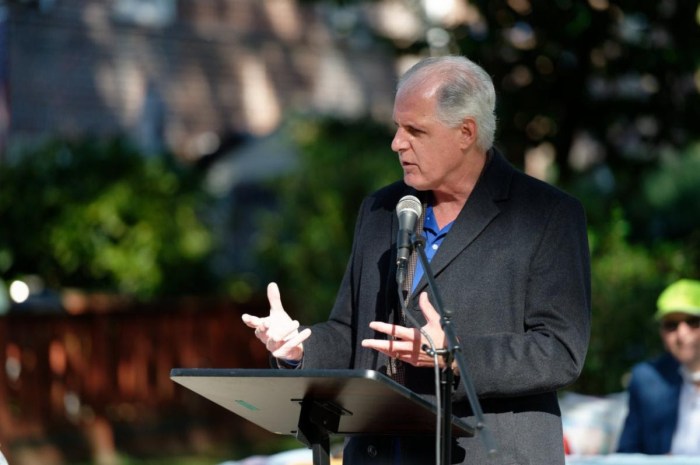By Rashmi Vaish
“Good! Give me another 10 percent!” he called out as the pace picked up. Seventeen other paddlers answered his call, faces drawn in concentration, sweat pouring down them and mixing with splashes of water from the lake as their paddles swooshed in and out of the water's surface.As the five-minute run ended, the boat in its momentum sailed by a set of rowers in another boat jeering in friendly competition. But the first set of rowers didn't really notice. They were exhausted, cooling down from a burst of muscle power they had to employ in the final stretch.A little later, a young paddler in the first row smiled at me as I sat high on the drummer's seat in their boat, out in the middle of the lake, hanging on without a belt or anything to hold me in place as the vessel swayed gently in its own wake. “Whatever you do, don't fall into the lake,” she said. “It's pretty disgusting in the water and I'll have to dive in to get you,” she added as she bailed out water from the bottom of the boat.It was the first day paddlers of the New York Wall Street Dragons were rowing on a one-ton, solid teak wood boat, handcrafted in Hong Kong. And it was critical for them to get a feel for how the boat would handle. It was the kind of boat they would row at the 14th Annual Hong Kong Dragon Boat Festival in New York to be held at the lake on Saturday, Aug. 7, and Sunday, Aug. 8.The history of dragon boat racing can be traced all the way back to the third-century B.C. Legend has it that a poet and reformer of the time, Qu Yuan, drowned himself in a river in protest against the reigning emperor's rules. The locals, it is said, raced to reach him in their boats in an attempt to save his life and prevent the fish from eating his body. And so the dragon boat festival was born.The festival, introduced to New York by chairman of the festival Henry Wan, draws thousands to Meadow Lake every year. “Thirty thousand to 40,000 people come to watch the races every year,” said David Archer, director of public relations and marketing. “There are over 100 teams, each with up to 18 paddlers, one steerer and one drummer, so that makes well over 1,000 participants. And this year there are more than $60,000 in cash and prizes to be won, a lot more than previous years.”For spectators, getting there will be easy. Festival organizers recommend using public transportation, buses and the No. 7 train to Shea Stadium. “The MTA is providing a free shuttle from the station to the lake all day,” added Archer, “so it'll be really easy coming to see the races.”The festival is scheduled to be packed with races and other events. On Aug. 7 there will be an opening day parade at noon. Following the parade will be the New York City Championship Race. The U.S. Dragon Boat Open Championship Races will take place Aug. 8, with racers competing for their share of the $14,000 in cash prizes Ð a $6,000 prize for the category of US Open Championship, $4,000 for the Mixed Division category and $4,000 for the Women's Division. There are also more than $50,000 in round-trip airline tickets to Hong Kong and other Asian cities to be won, which will be shared by winners in all the various categories. The races will be held from 9 a.m. to 5 p.m. both days.But the boat races aren't the only feature of the festival. Also to be enjoyed are traditional Chinese arts including martial arts demonstrations; arts and crafts stalls; performances of the traditional Chinese dragon dances and other musical programs and myriad food stalls manned by the many sponsors of the event.One of the main highlights of the festival is the boats themselves, which for the day of racing are adorned with brightly painted, festive and traditional heads and tails of dragons on each end of the boats. The steerer stands in the well of the boat at the tail end, and the drummer sits on a high bench at the head end to keep the time and momentum going for the paddlers. But, as mentioned earlier, the paddlers only get a few days to practice on these heavy, custom-made boats before race day Ð for regular practice they use the lighter, modern-day paddle boats, much easier to handle.It's a challenging sport, and all the participants meet it head on, in good cheer and spirit. Like the New York Wall Street Dragons, returning winners in various segments of the races including second place in the advanced 250-meter category. The paddlers are part of a larger organization called the New York Wall Street Dragons Cultural Foundation, a not-for-profit group that reaches out to youth to involve them in a sport such as paddling that helps build team spirit and leadership initiatives.”It's really about getting our youth involved in dragon boat racing,” said member Good Jean Lau, a physical education teacher at PS 1 in Chinatown. “If we don't have our youth participate, then interest in the event will gradually end. We'll all get more and more involved with our own work and lives and forget about traditions like these.”That's the reason Lau focuses on youth and likes to think of the activity as a sort of youth outreach program. When she started paddling 10 to 11 years ago, she was with the Chinatown YMCA where she built up her own team for a year. Then, the founding member of the New York Wall Street Dragons Cultural Foundation, Chun Wing Louie, invited her to join his dragon boat initiative. Since then Lau has been actively recruiting teenagers, many from the school in which she works. One such teenager is 18-year-old Fiona Chin. “I volunteered with Ms. Lau at PS 1 four years ago,” said Chin, an attractive, slightly diffident young girl. “This is my fourth season at the Dragon Boat races.””A lot of us were brought in by Ms. Lau,” piped in Kelly Chan, as she waited with the others to get on the boat to go for a half-hour grueling practice session. “It's a lot of fun.”It is a lot of fun and a lot of hard work, especially if you're serious about the sport, like the team of paddlers from DCH. “They're a very competitive, very strong team,” public relations director Archer said as he described some of the leading teams of the races. DCH was a major winner in last year's events and has won events internationally in countries such as Canada and Germany.They're competitive, strong and very friendly, something you'd notice about all the racers at the event, whatever age or cross-section of life they may be from.Across Corona Park, as the sun beat down hard on the marina by Shea Stadium, the team of paddlers from DCH pulled into the dock and got onto the ramp, a set of seasoned, experienced winners.Most of these paddlers were drawn into the sport through friends or cousins, like 26-year-old Valerie Joe, whose brother was a paddler at Stony Brook University. “He basically introduced me to the sport,” Joe said. “And I had a cousin who joined the sport last year.”Lucy Sawyer, a 22-year-old lifeguard who wants to be a lawyer, came in via a friend, as did Kimmy Eng, a 24-year-old financial analyst. For them, paddling is serious business.”We do a lot of traveling,” Joe said. “We recently went to an event in Toronto. … It was great,” Eng added.The DCH team not only practices paddling on Tuesday and Thursday nights and on Saturday and Sunday every week in the summer, they also keep fit with strength training in the winter. “A lot of people believe they don't have the level of fitness required to paddle,” smiled Sawyer, “but we whip them into shape soon enough.”Like Lau of the New York Wall Street Dragons, the paddlers of DCH also value the teamwork that paddling helps bring about.”It takes a lot of balance and co-ordination,” Sawyer said. “It's not just about strength. You can be big and strong, but if you're not in sync with your team, there's no way you'll win. And people are surprised that we can row so fast. We meet many teams that are filled with these huge, hulking men and they're pretty taken aback when they look at us and the speed with which we paddle. Like, hey, those are really little people!””The focus of the team has to be on the inside of the boat,” Lau explained, “where everyone is working like one heartbeat, in unison Ñ not like a caterpillar. … It's all about supporting each other, being able to speak your mind without hurting people's feelings. It's really great how all of the youth on the teams have been concerned about working together. Because they realize the importance of being one team.”Continued Sawyer of DCH: “Our paddle boat team is like second family to us.””Oh, yes,” said teammate Joe. “We're together all the time. I think we can safely say our priorities in life are family, work, boating, then friends.”But not all teams are involved this deeply in the sport. The Dragon Flies, for instance, are a private team that races just for the fun of it. “We paddle for the fun of the competition,” said Peter Gin, who has been paddling with the Dragon Flies since 2001. “We pay out of our own pockets and practice only during the summer.”Which is not to say they're ineffective or lack training. They are returning champions this year and are racing to defend their title in the advanced division.Also, Dragon Boat racing doesn't just attract the youth. Eric Alberts, 64, started paddling 10 years ago. Now he steers for the Dragon Flies. And he still loves the thrill of the race. “I paddled for HKA Metlife. Back then, we had our own team,” he recalled of earlier times. Then Henry Wan, founder of the festival in New York, brought him into the festival. “You could die a thousand deaths before you cross that finish line,” he said. “It's five minutes of just pure adrenaline with any kind of speed.”Louie, the founding member of the New York Wall Street Dragons Cultural Foundation, chips in too, as he steers his own team across the lake.In essence, it's a traditional festival and a sporting event rolled into one that promises a weekend of color, competition and lots of fun.Reach contributing writer Rashmi Vaish by e-mail at news@timesledger.com.


































